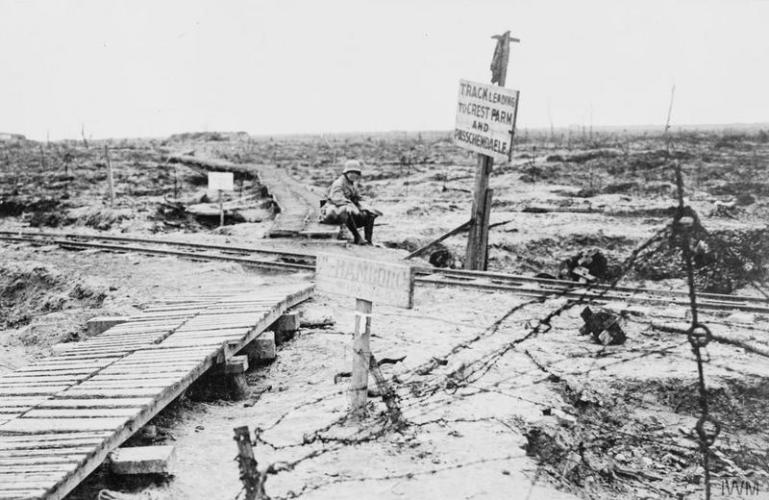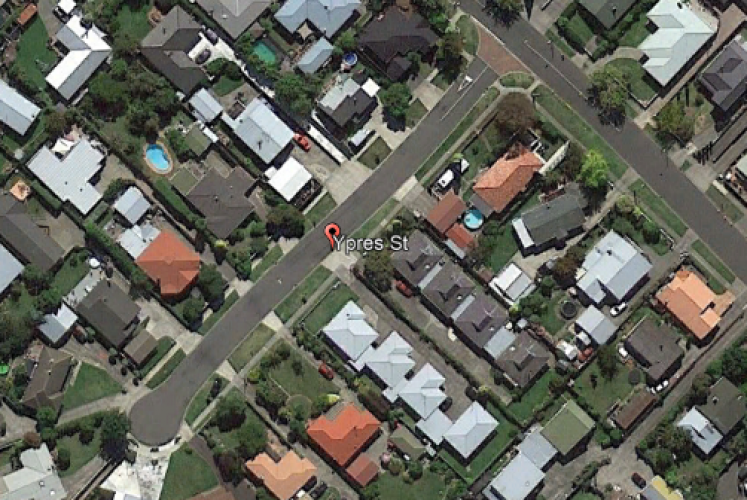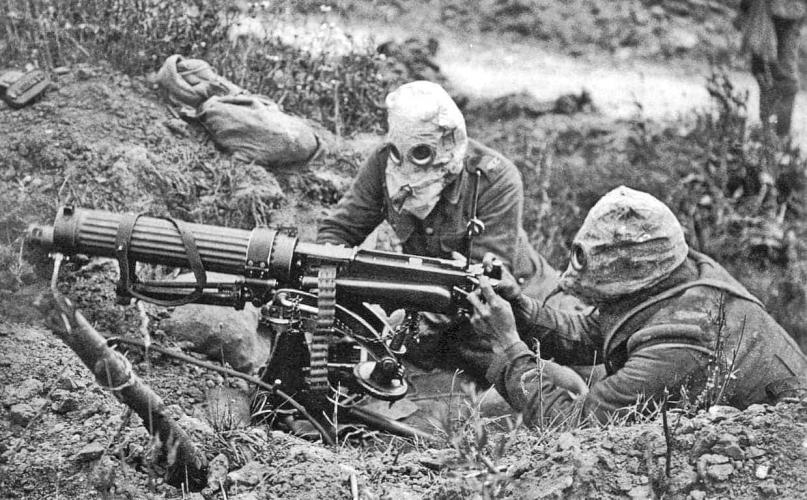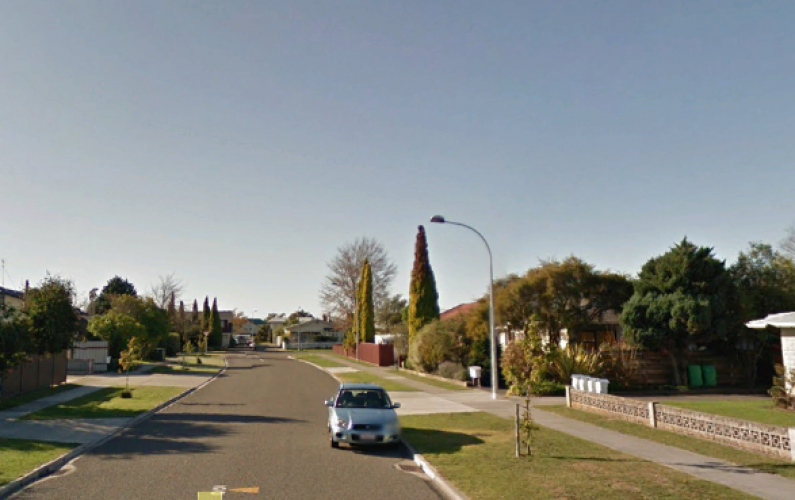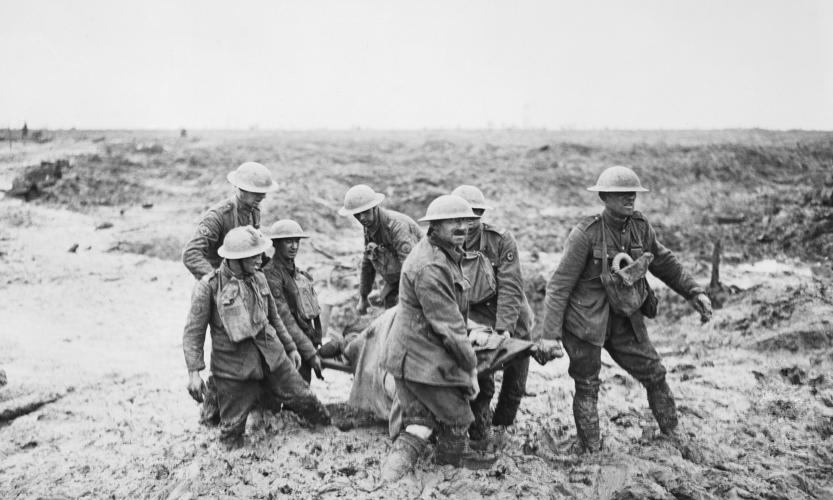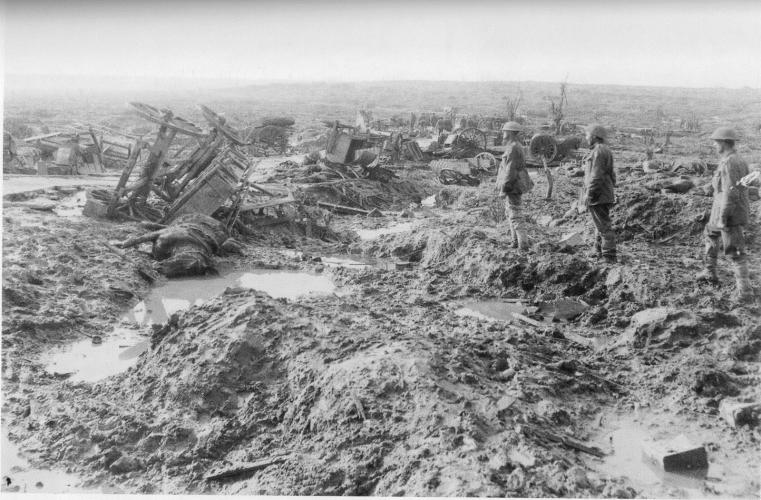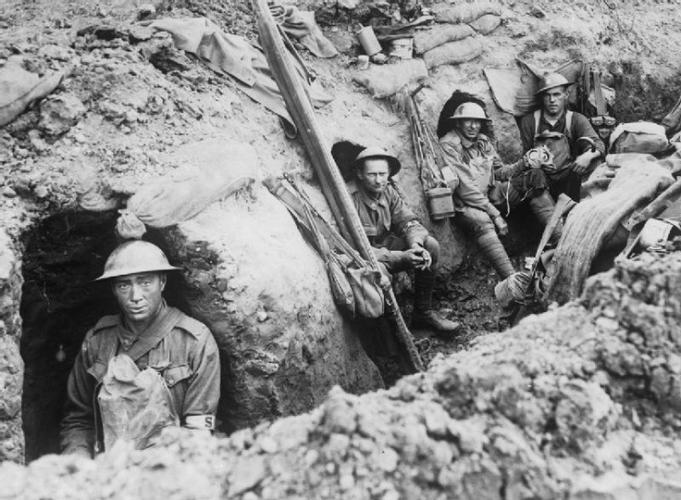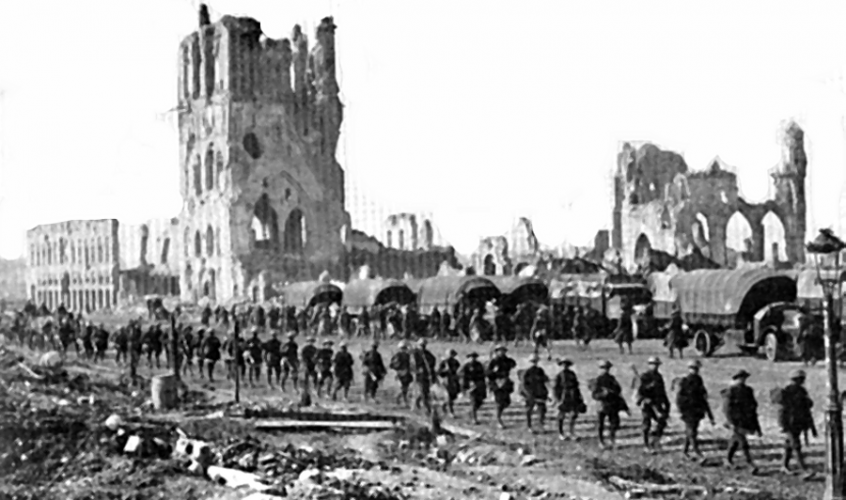188 Ypres Street Greenmeadows, Street view 2018.
Reason for the name
Napier City Council has a policy to name streets within the suburbs of Greenmeadows and Taradale in honour of overseas battles, campaigns and VC winners. Ypres Street in Greenmeadows is named in honour of all those involved in the various battles of Ypres in WW1.
The Great War Arrives at Ypres
According to local accounts, the first contact for the people of Ypres with the First World War was the arrival of thousands of German troops on 7th October 1914. They began to enter the town from the south-east along the road from Menin through the Menin Gate (Menenpoort) and from the south through the Lille Gate (Rijselpoort). Scouting parties advanced north and west beyond Ypres in the directions of Boesinghe, Vlamertinghe and Elverdinghe. By 9pm the town, its streets and market square were packed full of horses and riders, soldiers, carts, carriages, cars, field kitchens and guns. The local accounts reckon on about 10,000 troops. Soldiers were billeted for the night in the halls of the Cloth Hall, in schools, the army barracks, the waiting rooms at the railway station and in houses with the local people. The mayor, Mr Colaert, advised the people of Ypres to stay calm and remain in their homes.
The shops were crammed full of German soldiers. By way of payment some offered German coins, some had paper notes. Others gave pre-printed coupons to the shopkeepers or locals for food and clothes. There were stories of damage to the railway station, stealing from local peoples' homes and drinking. The bakers were ordered to have 8,000 bread rolls baked and ready for 8.30am the next morning, 8th October, to distribute to the troops. Hay, straw and oats were requisitioned and the town's coffers were emptied of 62,000 Francs. Horses and wagons were requisitioned and paid for with coupons. Anyone in receipt of a coupon as payment was, however, unlikely ever to receive payment from the German Army because the next day, 8th October, the Germans started to move out of the town from about midday. The soldiers on foot went in the direction of Dickebusch. The cavalry went in the direction of Vlamertinghe. They were never to return.
Author: Poppy Places Trust
The First and Second Battles
The First Battle of Ypres (French: Première Bataille des Flandres German: Erste Flandernschlacht, 19 October – 22 November) was a battle of the First World War, fought on the Western Front around Ypres, in West Flanders, Belgium, during October and November 1914. The battle was part of the First Battle of Flanders, in which German, French and Belgian armies and the British Expeditionary Force (BEF) fought from Arras in France to Nieuport on the Belgian coast, from 10 October to mid-November. The battles at Ypres began at the end of the Race to the Sea, reciprocal attempts by the German and Franco-British armies to advance past the northern flank of their opponents. North of Ypres, the fighting continued in the Battle of the Yser (16–31 October), between the German 4th Army, the Belgian army and French marines.
The fighting has been divided into five stages, an encounter battle from 19 to 21 October, the Battle of Langemarck from 21 to 24 October, the battles at La Bassée and Armentières to 2 November, coincident with more Allied attacks at Ypres and the Battle of Gheluvelt (29–31 October), a fourth phase with the last big German offensive, which culminated at the Battle of Nonne Bosschen on 11 November, then local operations which faded out in late November. Brigadier-General James Edmonds, the British official historian, wrote in the History of the Great War, that the II Corps battle at La Bassée could be taken as separate but that the battles from Armentières to Messines and Ypres, were better understood as one battle in two parts, an offensive by III Corps and the Cavalry Corps from 12 to 18 October against which the Germans retired and an offensive by the German 6th Army and 4th Army from 19 October to 2 November, which from 30 October, took place mainly north of the Lys, when the battles of Armentières and Messines merged with the Battles of Ypres.
The Second Battle of Ypres was fought from 22 April – 25 May 1915 for control of the strategic Flemish town of Ypres in western Belgium after the First Battle of Ypres the previous autumn. It was the first mass use by Germany of poison gas on the Western Front. It also marked the first time a former colonial force (the 1st Canadian Division) defeated a European power (the German Empire) on European soil (in the battles of St. Julien and Kitcheners' Wood, engagements during the battle).
Casualties
After the war, German casualties from 21 April to 30 May were recorded as 34,933 by the official historians of the Reichsarchiv. In the British Official History, J. E. Edmonds and G. C. Wynne recorded British losses of 59,275 casualties, the French about 18,000 casualties on 22 April and another 3,973 from 26–29 April. Canadian casualties from 22 April to 3 May were 5,975, of whom about 1,000 men were killed. The worst day was 24 April, when 3,058 casualties were suffered during infantry attacks, artillery bombardments and gas discharges. In 2002, Clayton wrote that thousands of men of the 45th and 87th divisions ran from the gas but that the number of casualties was low. The Germans overran both divisions' artillery but the survivors rallied and held a new line further back.[38] In 2010, Humphries and Maker, in their translated edition of Der Weltkrieg recorded that by 9 May, there had been more than 35,000 German casualties, 59,275 British between 22 April and 31 May and very many French casualties, 18,000 on 22 April alone. In 2012, Sheldon gave similar figures and in 2014, Greenhalgh wrote that French casualties had been exaggerated by propaganda against German "frightfulness" and that in 1998, Olivier Lepick had estimated that 800–1,400 men were killed by gas in April out of 2,000–3,000 French casualties.
Lance Sergeant Elmer Cotton described the effects of chlorine gas,
It produces a flooding of the lungs – it is an equivalent death to drowning only on dry land. The effects are these – a splitting headache and terrific thirst (to drink water is instant death), a knife edge of pain in the lungs and the coughing up of a greenish froth off the stomach and the lungs, ending finally in insensibility and death. The colour of the skin from white turns a greenish black and yellow, the colour protrudes and the eyes assume a glassy stare. It is a fiendish death to die. Cotton
Canadian participation in the Battle of Gravenstafel is commemorated on the Saint Julien Memorial in the village. During the Second Battle of Ypres, Lt. Col. John Alexander McCrae M.D. of Guelph wrote In Flanders Fields in the voice of those who perished in the war. Published in Punch 8 December 1915, the poem is still recited on Remembrance Day and Memorial Day including New Zealand.
The Battle of Ypres, 1917 (Third Ypres)
Whereas the first and second battles of Ypres were launched by the Germans in 1914 and 1915 respectively, Third Ypres was intended as Sir Douglas Haig's Allied forces breakthrough in Flanders in 1917.
The Battles of Ypres, 1917. The British finally got what they had wanted since 1914: the opportunity to attack at Ypres and breakout of the confines of the salient of trenches around it. Often known as the Third Battle of Ypres or Passchendaele, the offensive began with encouraging gains but terrible summer weather soon bogged it down. By August the offensive was clearly failing in its objectives and had descended into attritional fighting. New techniques by both sides led to agonisingly slow forward movement for the British, at enormous cost in casualties to both sides. Bad weather in October led to the battlefield becoming an impossible quagmire.


